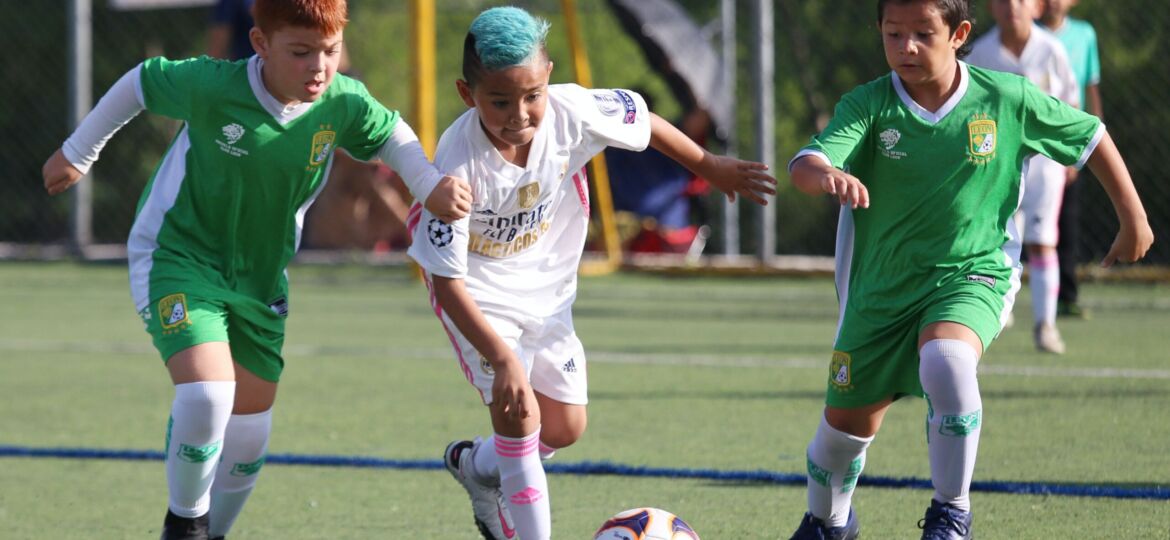
FH Summary: This post highlights the significance of probabilistic thinking in children’s development and success. Probabilistic thinking involves estimating the likelihood of various outcomes and embracing the inherent uncertainty of life. By introducing probabilistic thinking at an early age, parents can help children navigate complexities, make informed decisions, and develop a more nuanced worldview. The post emphasizes the importance of teaching children to appreciate ambiguity, empowering them to understand life’s shades of grey and make conscious, proactive choices.
In a world often defined by uncertainty, the ability to make informed decisions based on probabilities is an invaluable skill. Just as we teach our children the importance of honesty, empathy, and hard work, we need to arm them with the intellectual tools to navigate life’s ambiguities effectively. As such, introducing probabilistic thinking at an early age can profoundly shape our children’s lifelong growth trajectory. Also the conjunction of probabilistic thinking and all the other “soft skills” is an important concept for children to understand as soon as possible. By understanding that the reality of the world isn’t always black and white and that there are shades of gray in almost everything we do, our children will have deeper reserves of empathy and will understand the world that much better.
So, let’s dive into this fascinating aspect of child development – the immense potential of probabilistic thinking.
Unraveling Probabilistic Thinking: A Core Life Skill
Probabilistic thinking is an aspect of reasoning that often flies under the radar in typical conversations about child development. However, it is as important as any other cognitive skill we strive to instill in our children. In its essence, probabilistic thinking involves estimating the likelihood of various outcomes to make decisions or predictions, acknowledging the inherent uncertainty in most situations.
The importance of this skill in navigating the complexities of the world cannot be overstated. Like other habits that contribute to an upward spiral of growth, it helps our children manage real-world uncertainties, improves their decision-making abilities, and fosters a realistic understanding of risk and reward. Similar to investing in their physical health or emotional intelligence, nurturing this cognitive aspect is equally important. As we are going to come back to time and time again, mental models are extremely important because they allow ourselves and our children to quickly make sense of complex situations in ways that improve outcomes. By building a mental model that takes into account probabilistic thinking, we will be giving our children a step up as they navigate the complex and ever changing world in which they are developing.
Renowned psychologist and Nobel laureate Daniel Kahneman stated, “We can improve our intuitive judgment. Probabilistic reasoning can be learned and taught.” This statement underscores our responsibility as parents to teach our children this valuable skill.
The Underpinnings of Probabilistic Thinking
Children begin to grasp the concept of cause and effect in their formative years. They initially learn through simple associations: if they drop a toy, it falls; if they touch a flame, it hurts. As they grow older, these experiences become more nuanced, and their ability to predict outcomes based on these experiences becomes more crucial.
Introducing probabilistic thinking to children at this stage of development can help them interpret and anticipate these complexities. They learn to discern patterns, understand the randomness of certain events, and develop a more nuanced worldview. This understanding equips them to tackle more complex challenges as they progress in their journey.1,2
From Absolutes to Ambiguity: Embracing Life’s Shades of Grey
Children, like most of us, are prone to “black-and-white” thinking – perceiving situations as either “this” or “that”. However, life seldom operates in absolutes. Most situations exist in shades of grey, and teaching children to appreciate this ambiguity is crucial.
Probabilistic thinking aids this transition, providing a more nuanced framework to interpret their surroundings. For instance, not completing homework once doesn’t equate to failing a class. However, repeated disregard for homework can increase the chances of such an outcome. This understanding, though subtle, can make children more responsible and accountable, initiating an upward spiral of growth. They will also begin to understand and appreciate that not every positive step is immediately rewarded or even rewarded at all. That the book they just read may have no practical implication to their short-term development, but it’s also possible that the book they just read will unleash a lifetime of interest in a particular topic and launch them toward a career path that will come to define their lives.
Empowerment through Probabilistic Thinking
Probabilistic thinking, while seemingly abstract, can be a powerful tool when applied to everyday situations. It can help children make informed decisions about their health, interpret social dynamics more effectively, and even understand complex scientific concepts.
Consider dietary habits – a single day of unhealthy eating might not lead to immediate health issues. However, consistently following such a pattern can increase health risks over time. By teaching children to understand these probabilities, they can make choices that positively impact their health and overall quality of life, reinforcing their upward spiral.
Making Probability Come Alive: A Story of Soccer and Shin Guards
To truly grasp the concept of probability, children need to see it in action. Let’s consider Sam, a nine-year-old boy with a passion for soccer. Sam enjoys practicing every day with his friends but often forgets his shin guards. His mother explains that while he may not get injured in a single game without shin guards, playing consistently without them increases his risk of injury over time.
This narrative illustrates how an understanding of probabilistic thinking can lead to conscious, proactive habits. By recognizing the probability of injury, and that just because he may not have gotten hurt the last time he forgot them does not mean that he wouldn’t in the future, Sam decides to wear his shin guards consistently, ensuring his safety and sustained enjoyment of soccer.
We can even take this concept to a much simpler level. Talk to your children about the weather forecast for tomorrow. Show them the probability of rain on a given day and explain to them what a 50% chance of rain actually means. It doesn’t mean that there’s going to be half the amount of expected rain that falls. At its essence it means that the storm could break one way or it might move in a different direction and just like the changing weather patterns that could develop over hours or days, human interactions are just as fickle.
Maybe you’re pulling up behind a car at a stop sign. Before any turn signal is engaged talk to your child about the options that the car’s driver has. Maybe they go left or right or straight. There’s even a very miniscule chance that the car stalls out right at the stop sign and doesn’t go anywhere. By providing cues and context to our children’s observations, we can provide guidance and put them on a path to making probabilistic thinking a true First Habit.
Cultivating Probabilistic Thinking: An Investment in the Future
Like any other skill or habit, probabilistic thinking flourishes through practice and consistency. As parents and caregivers, we play a critical role in promoting this form of reasoning and making it an integral part of our children’s thought processes. In doing so, we are investing in their cognitive development and empowering them with a more enlightened perspective of the world.
First Habits is here to assist you on this journey, offering resources and strategies to help you cultivate this and other valuable habits in your child. Remember, probabilistic thinking isn’t merely a mathematical concept – it’s a mindset that enables children to confidently navigate an uncertain world, to understand life’s randomness, and to make informed decisions.
Every new habit we introduce in our children’s lives impacts their development trajectory and future. By integrating probabilistic thinking into their skillset, we can help guide them onto an upward spiral of personal growth and success. This paves the way to a future filled with potential, marked by resilient, adaptable individuals equipped to thrive in the face of uncertainty.
Embark on this journey with us. Visit the First Habits website and sign up for our weekly newsletter for detailed insights and guidance on fostering probabilistic thinking and other crucial habits in your children. Together, let’s shape the thinkers and leaders of tomorrow.
1 Causal learning mechanisms in very young children: two-, three-, and four-year-olds infer causal relations from patterns of variation and covariation” by Alison Gopnik, Clark Glymour, David M. Sobel, Laura E. Schulz, Tamar Kushnir and David Danks in Developmental Psychology (2004) – Conclusion: This study investigates the capacity of children as young as two years old to use probabilistic patterns to infer causal relations. It finds that even very young children can use patterns of statistical covariation (probability of one event given another) to make sophisticated causal inferences. The study concludes that probabilistic thinking in children can help them understand and infer causal relationships from a young age.
2 The development of probabilistic reasoning” by Bar-Hillel, M., & Falk, R. in Child Development (1982) – Conclusion: This study investigates the developmental stages of probabilistic reasoning in children between the ages of 5 and 14. It concludes that probabilistic reasoning improves with age, and that there are qualitative shifts in the types of errors made at different ages. These findings suggest that probabilistic thinking is a cognitive skill that develops and refines over time, highlighting the importance of early interventions to foster this crucial skill.












